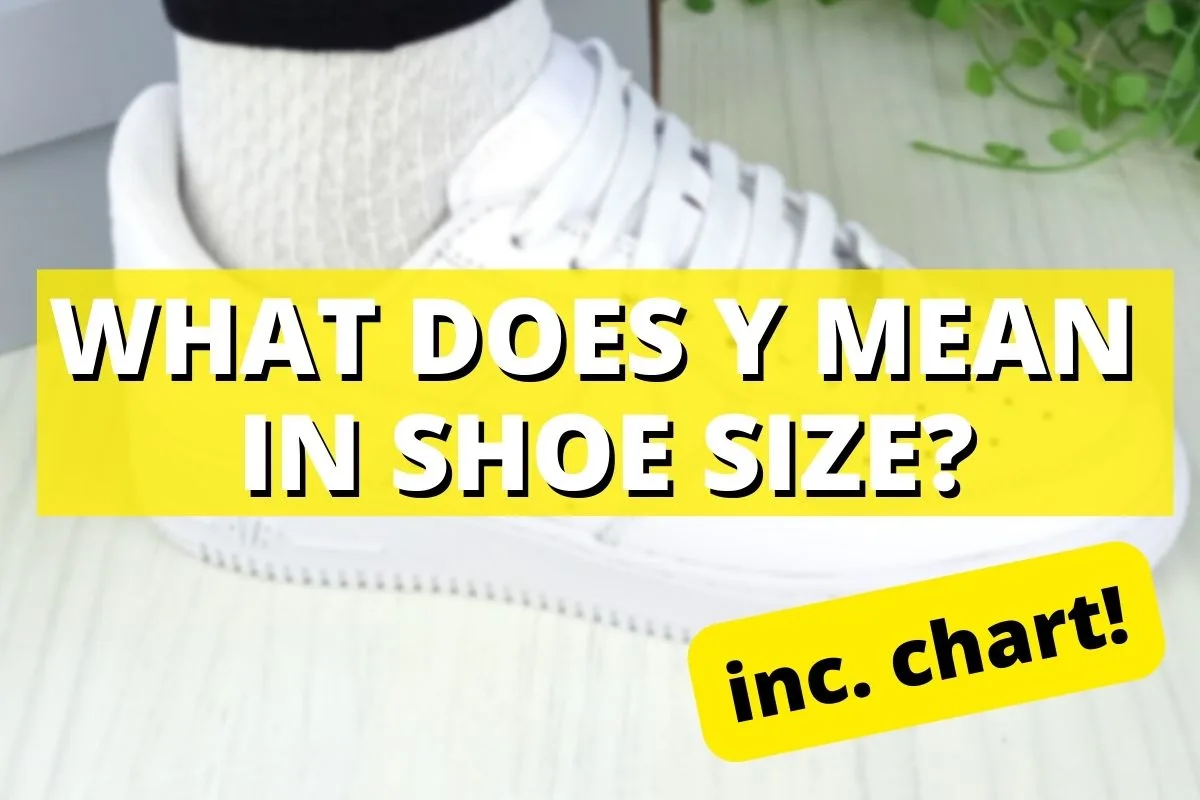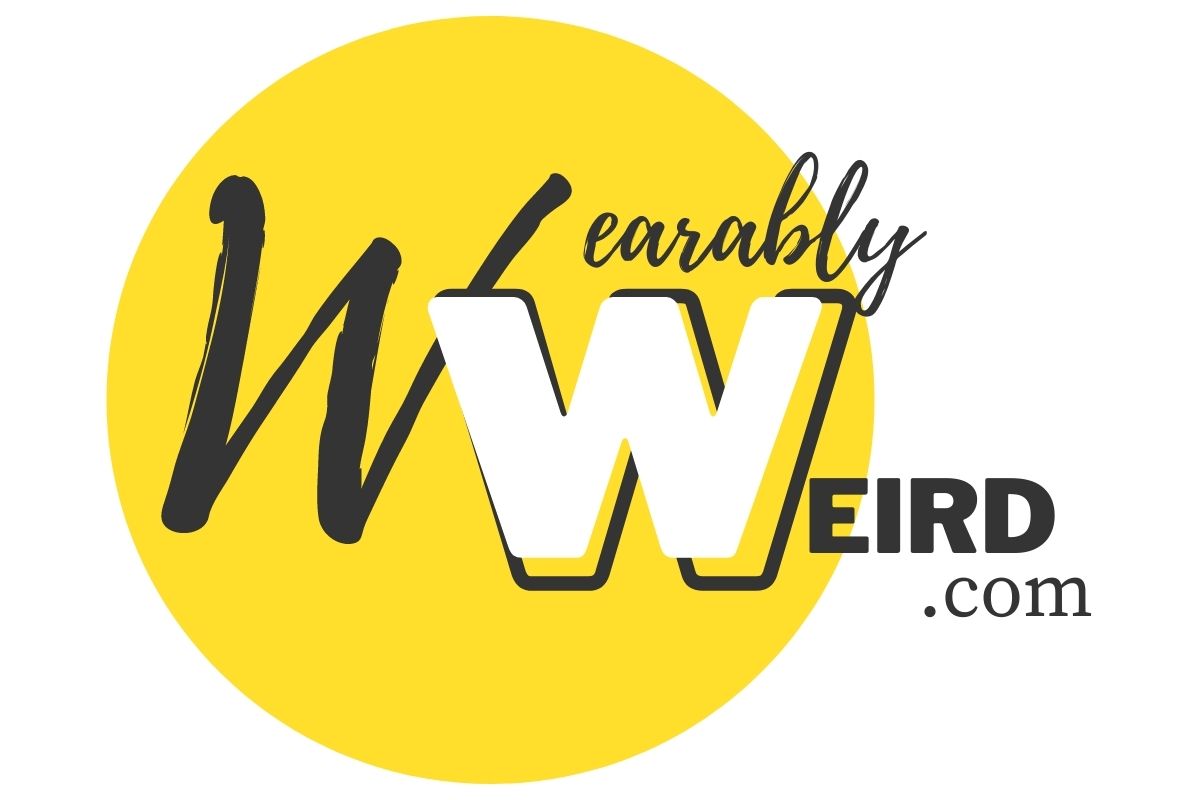If you are buying shoes online for your kids or walking through a store with shelves upon shelves of shoes, it’s normal to feel a bit confused about the labels. One thing that confuses many first-time buyers of shoes for the young is the label Y.

When a shoe size has Y in it, it means youth; the shoes will be smaller than normal shoes but slightly larger than shoes meant for children. Compared to other shoes, you will notice that the size stops after a certain point, which means you need to move to full adult shoes.
One of the things that many people, especially parents, will note is that the Y size does overlap with many other shoe sizes. This means you will need to know when to move to the next sizing chart to ensure you always get the best possible deals from your shoes. I have included a Y shoe size chart for you to use in this post.
Are Y Sizes The Same As Normal Sizes?
As we said earlier, Y sizes are the same as normal-sized shoes, with most Y sizes of the same number being significantly shorter and smaller than their adult versions. Further, the difference between men’s and women’s shoes should never be underestimated as Y sizes are closer to women’s.
Often, women with smaller feet prefer to buy the largest Y-sized shoes as they fit more comfortably than the more common shoe sizes for women. This is because of a combination of average shoe sizes and how stores stock shoes that are more likely to be sold.
Whereas boys often start wearing adult shoes earlier than most girls, we have seen girls with larger feet move quickly out of the youth sizing. We recommend having your own and your children’s feet measured every few months to ensure comfortable shoes.
What Sizes Are Y Sizes?
When browsing through the internet shops or walking through the shoe stores, any size with a Y in front of the size or after it is considered youth. It should be noted that the Y must appear within the sizing circle that shoes have and not be outside of it.
Many people get confused when they buy shoes with the Y symbol outside, only to find that the shoes they bought are too large. This is because some brands have Y as part of their naming for shoes, usually in front of or after the shoe size.
If you are confused, we always recommend you check the manufacturer’s website or find the label all shoes have that says the size in centimeters. This label is usually found on the flap under the shoelaces, allowing you to see exactly what size the shoes are.
Until What Age Do Y Sizes Go?
The youth label starts at 1Y and goes through to 6Y, which correlates to the ages of seven to 12, giving most children five years of shoes that will fit them. At 11 or 12, most children switch to adult sizes as their feet may grow unexpectedly during these ages.
It should be noted that some taller children can also move over to adult sizes at a younger age, while shorter children may move over owing to their bridge sizes. Moving over to adult sizes at an earlier age is never bad and may only mean that the shape of the shoes is not right for your children.
Further, we recommend keeping the area and country you are living in mind as well, as some countries have smaller overall sizes for shoes than others. While some genealogies also make for bridges that are more defined than others, causing feet to be larger at a much younger age than the worldwide average.
What Are The Different Sizes In Y?
Now that we understand what Y sizes are and how they may differ for each child, we need to take a quick look at what the actual sizes will be. Many people have noted that it is easier to understand youth shoe sizes compared to the adult-sized equivalent.
It should be noted that the most common shoe sizes that overlap with the youth category are those worn by women. With more overall sizes available, these two shoe sizes usually only differ a few centimeters, while men’s adult shoes are much larger than any youth-sized shoe.
As you start buying youth-sized shoes, you will learn what they are comparable to and how to get the best out of them. We always recommend that you take a moment to ensure that the shoes you have will fit and that you can get a pair of shoes that will fit the smaller feet in your family.
The Sizing Chart
Here is a Y shoe size chart, for you to use when measuring your child’s feet.
| Age | US Size | Foot Length (inches) |
|---|---|---|
| 7 | 1Y | 7 5/8 |
| 8 | 2Y | 8 |
| 9 | 3Y | 8 3/8 |
| 10 | 4Y | 8 5/8 |
| 11 | 5Y | 9 |
| 12 | 6Y | 9 3/4 |
For UK sizing, please refer to the below:
While on paper, youth or Y, sized shoes start at one or the age of seven, when measured, the shoes start at 20.1 cm heel to toe; this would be a UK1. The shoes go up to 7Y, age 12, and measures 24.6 cm at this size or a UK 6.5, making them perfect for many with smaller feet.
It should be noted that the Y sizing is not always used, as seen by the UK sizing chart, which goes from 13.5 C for children to a UK 1. From size UK 1 and upwards, the shoes are considered adult sizes, while Europe sizes are incomparable since they are only numbered, with a 1Y being size 32.
Compared To Adult Sizes
Compared to adult shoe sizes, it becomes a bit more muddled as the only comparable adult shoe sizes are those of women. Many accept that a 7Y would be a women’s 8.5 or 9, making it possible for many girls to switch to adult shoe sizes at a much younger age than boys.
This is because adult men’s shoe sizes are significantly larger and often wider than the shoes worn by women, with less bridge support than many think. You may find that your 12-year-old son wears a 7Y while your daughter has switched to adult shoe sizes at a much younger age.
Compared To C Sizes
When comparing youth sizes to child sizes, you may notice that they never overlap in the US or Europe. While in the UK, they only overlap in sizes for 1Y in the US and 13.5C for the UK, this means that once you move onto youth sizes, you won’t need to worry about overlapping.
We recommend keeping this in mind when purchasing shoes for your children, as they may still need to have child-sized shoes for another few months. Many people assume that youth and child shoes are similar when in reality, youth shoes can be too large for younger children who may need child-sized shoes.
At What Age Does Y Start?
The youth size shoe starts at age seven and goes to a maximum of 12, while many parents may be surprised to learn their children’s feet grow faster than they expect. Children as young as six or even five can often start wearing youth-sized shoes as their feet are larger than expected.
It should be noted that children that spend more time without shoes may need to move on to larger-sized shoes faster than others. As they run, play, walk, and have fun, their feet flatten out, becoming wider around the toes than children who wear shoes more often.
As their feet widen, it is healthier to wear a shoe size slightly larger than their current size would normally be. This prevents chafing on the sides of the feet while also ensuring that they keep the shoes on for longer because they are not uncomfortable.
Are Brands Sizes Different For Y?
As the youth size for shoes is predominantly used in the US, the sizes are always the same, as all brands use the same sizing chart for the US. This means that even if you see an unfamiliar brand, you can rest assured that the shoe size will be the same as the shoes you have already bought.
These shoe sizes are often regulated, so brands have to stick to specific dimensions in the shoe sizes. Because these shoe sizes are regulated, you may find that even in other countries, you can find shoes that fit you and your children much easier than you would find a t-shirt.
We recommend you remember how the youth-size shoes work together across sizing charts and how your children’s feet are shaped. We have often found that half sizes in the UK fit more comfortably than rigid shoe sizes that are whole numbers.
Why Are Shoes Sized With Y?
The youth category of shoes was brought in to determine the half sizes of shoes many youths wore before they turned into teenagers. As this is a period where most boys and girls are not yet heavily affected by hormones, the shape and size of feet are similar enough to have the same sizes.
Often you may find that the same pair of shoes sold in one section of the store is also being sold in the other section, just with different colors. This makes it easier for parents, families, and children to buy the right shoes and helps manufacturers.
Because the feet are all more or less the same in size and shape, it is easier to produce a wider variety of colors for each type of shoe. This is often why you will see shoes in the youth section in every rainbow color, but the general shapes are all the same on either side of the genders.
How Often Should You Replace Shoes That Are Y-Sized?
In a perfect world, we recommend only replacing shoes with the Y size once a year as your children continue to grow. However, we recommend checking once every four to six months whether or not your child needs to move up a size.
Children grow surprisingly fast, and one of the areas they are prone to constantly needing new equipment is shoe sizes. As their feet grow, they may need to have a new pair of shoes fitted several times throughout one year.
However, it should be noted that while your child may move through several pairs of shoes one year, the very next year, they may stretch upwards while their feet stay the same size. Often you may find your child going from being the shortest in the class to the tallest while still wearing the same pair of shoes.
Can You Buy Shoes That Are Not Y-Sized For Youths?
The youth size for shoes is only used in the US and New Zealand, which has meant that in most other countries, youths start wearing normal shoe sizes. This is often when you can find shoes in the wider category available to everyone shopping at the store.
If you are worried, the best way to find a shoe size that will fit your child is to have their feet measured. Once you know their size, you can search the size chart for normal shoes and use it to determine what shoes they should be getting, often starting at a UK size five or six.
We recommend considering this owing to the consistency many find with the UK size charts. Shoes have sizing charts that will tell you what size they are in the UK, US, Europe, and even China, allowing you to learn what shoes will fit your children quickly.
How Do You Know If Shoes Are Y-Sized?
All shoes that are Y, or youth, size will have a Y after the number that demotes the size of the shoe, usually only done in the US. When looking for shoes outside of the US, the size chart on the flap inside of the shoe will have a Y in front of or after the US shoe size indicator.
Often people find that the symbol for youth-sized shoes can be lost when they are quickly looking at shoes in the store they are busy in. Causing them to think a shoe is Y-sized when in reality, it is just a normal-sized shoe, usually much too large for the children that would have to wear them.
We always recommend that you take a moment to consider in which section you are in or if the store you are shopping at even has a youth section. We have seen many people grab a pair of what they think are Y-sized shoes when they are just normal adult shoes.
How Many Y Sizes Are There?
There are seven Y sizes, going from one to seven, each going up half a size in standard sizes. You won’t be able to find half sizes in Y-sized shoes as they are already half sizes compared to normal shoe sizes as measured by the UK or adult US sizes.
Many parents have become frustrated when buying Y-sized shoes specifically because they seemingly can’t find the perfect fit for their child. However, we always recommend buying large when looking for Y-sized shoes for your children to allow them to enjoy the shoe for longer.
As with all things related to children, if something is too large for them and they are still below the age of 16, they will grow into it. As long as you don’t try to force your child’s feet into a pair of shoes that are too small, there is no harm in getting a pair of shoes that are not perfect.
Is Buying Y-Sized Shoes Worth It?
It should be noted that when you are buying shoes for your children, getting something meant for casual wear or serious sportsmanship will decide whether it is worth it. You may find that only shoes meant for casual wear have the Y sizes in stock for you to buy.
Whereas sports shoes are usually much more finely sized, giving you exact indications of the bridge’s height, the toes’ width, and the shoes’ overall length. Usually, only use adult sizes for the shoes or even ignore US shoe sizes to use European shoe sizes to give more accuracy.
This has meant that Y sizes shoes are only worth it when your child is not looking for shoes to do sports in, and you need something for their feet. Often casual shoes don’t need to handle as much damage or punishment as shoes that are used for sport and running need to have.
Conclusion
Y size shoes are perfect when you know your children are starting to grow into teenagers who need to be stylish. The Y will always stand for youth, unlike with shirts, shorts, and other clothes worn by children, where the Y can mean year.
For more shoe sizing guides, check out:
What Does PS Mean In Shoes? (Size Chart & Guide)
What Is B Width In Shoes? (Size Chart & Guide)
What Is D Width In Shoes? (Size Chart & Guide)
What Is 2E Width? (Shoe Size Chart & Guide)
What Does SE Mean In Shoes? ULTIMATE Guide
What Does GS Mean In Shoes? GS Shoe Size Chart
What Does H Mean In Shoe Size? (Size Chart)

Lorna is a footwear geek and the founder of Wearably Weird. She created a YouTube channel in 2021 for fellow footwear fanatics, dedicated to detail-rich footwear reviews and info. She has a fashion media qualification (awarded in 2011).
